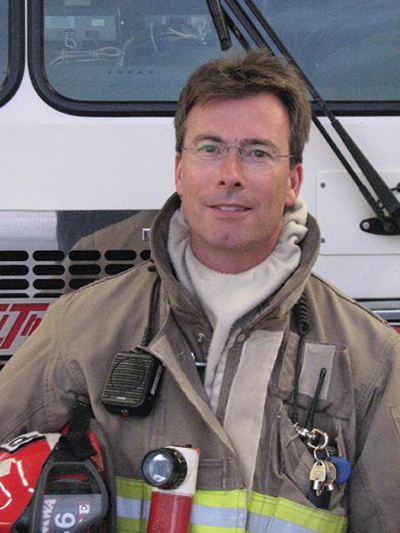
Features
Leadership
Fire IQ: April 2010
I ’ve had the good fortune to work with fire service leaders, chiefs and company officers who inspired and challenged me to be the best firefighter and company officer I could be.
April 12, 2010
By Peter Hunt

|
I ’ve had the good fortune to work with fire service leaders, chiefs and company officers who inspired and challenged me to be the best firefighter and company officer I could be.
Like great leaders anywhere, those with whom I had the privilege of working shared qualities that I always hoped I could emulate and one day pass on to others.
In my effort to do so, I attempted to define those qualities with the ultimate goal of developing a personal philosophy or mission statement to live by.
The common traits were relatively easy to identify: pride, enthusiasm, respect, discipline, motivation, dedication, stubbornness, empathy, courage, humility, kindness, assertiveness, and knowing when to risk a little or a lot.
Over time, I realized that a philosophy requiring straightforward and consistent application of these core values was the key.
The following mission statement for fire service leaders is not new or revolutionary but may offer some ideas for those willing to give it a try: I will do everything in my power to ensure that those firefighters for whom I am responsible can work safely, conduct themselves professionally and enjoy coming to work.
Although it can be difficult in the inherently risky business of fire fighting to achieve any one of these goals individually, the real challenge lies in consistently achieving all three together.
For example, if working safely were our only objective, chiefs and company officers could simply insist that defensive strategies be initiated at all structure fires.
The obvious problem with this strategy is that most buildings would burn to the ground, many more civilians would die, we wouldn’t look very professional and we’d have a lot of unhappy (but safe) firefighters to deal with.
Here are some suggestions on how fire service leaders find the appropriate balance between safety, professionalism and job satisfaction.
Working safely
There’s an old saying in the fire service that goes something like, “Let no man’s ghost return to say his training let him down.”
- Train lots, and never forget the basics. Take advantage of the incredible resources available today through websites, books and the ingenuity and creativity of your crew members.
- Ensure that department policies and budgets allow adequate time and resources to train.
- Discuss strategies and tactics with your crew regularly and cross train with neighbouring stations and mutual-aid departments.
- Although you can’t anticipate everything, on the way to the fire is not the time to review who does what.
- Review riding and tool assignments regularly and never assume that your firefighters are mind readers – let them know what you expect.
- Encourage physical fitness and lead by example through your own personal fitness level.
- An incredible 50 per cent of annual line-of-duty deaths can be attributed to heart attacks, strokes and other medical issues associated with poor health and fitness.
- Ensure that your members understand that they can question an order if they see something dangerous that you don’t.
- Wear all your PPE, stick together, insist on a radio for every member and communicate with your crew at all times.
Professional conduct
I’m not talking about career versus part-time or volunteer firefighters but about an attitude that says I’m here for my community, I know my job, I’m well trained and the public can count on me.
It’s not an accident that firefighters are among the most trusted and respected members of society; fire service leaders have a responsibility to ensure that this tradition continues with each new generation.
Whether you’re fighting the big one, or pre-planning a new building, remember that you are representing the entire fire service. Pride and professionalism are infectious and if our leaders demonstrate it consistently, so will our members.
Get out in the community as often as you can. Act like a professional, show respect to the public at all times and let them know you’re out there training, inspecting and pre-planning regularly. They deserve our best in everything we do.
Enjoy coming to work
Although firefighters typically enjoy a high level of job satisfaction, strong leadership can only improve an already good thing.
Fire service leaders must ensure that their members know their opinions matter, that they have a voice in the organization, that their ideas have value, that their health, safety, and survival are a priority, and that they can respectfully question department policies.
Ironically, the best trained firefighters are generally the happiest, as they are confident knowing they are prepared for most situations, understand what is expected of them, can work safely in otherwise dangerous environments, have confidence in their leaders, can conduct themselves professionally and will continue to earn and deserve the respect of the communities they serve.
There is no room for complacency in the fire service and especially among our leaders, so make an effort every day to ensure that those members for whom you are responsible can work safely, act professionally and are happy.
Peter Hunt, a 29-year veteran of the fire service, is a captain in
the Ottawa Fire Department’s suppression division. He can be reached at
peter.hunt@rogers.com
Print this page